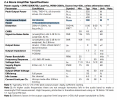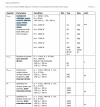You don't need to convince me, I've always been of the opinion that having more power for dynamic peaks is a good idea, simply asserting that the LS 50s should be powered with no less than 200watts per channel seems like an exaggeration to me.Im not speaking in RMS values. With an amp like the ZA3 and many other class D amps you have to factor in that the rated RMS power is going to be near the dynamic or peak power.
At 3m with a sensitivity of 85db the ls 50 can play at over 100db, but at that volume they are literally falling apart with dynamics and distortion and you really don't want to hear them sound that way, the solution with such small speakers is always to pair it with a sub so as not to overload them with sub 100hz frequencies which make it very difficult to reproduce with low distortion, but in that case the need for all that power also disappears.


